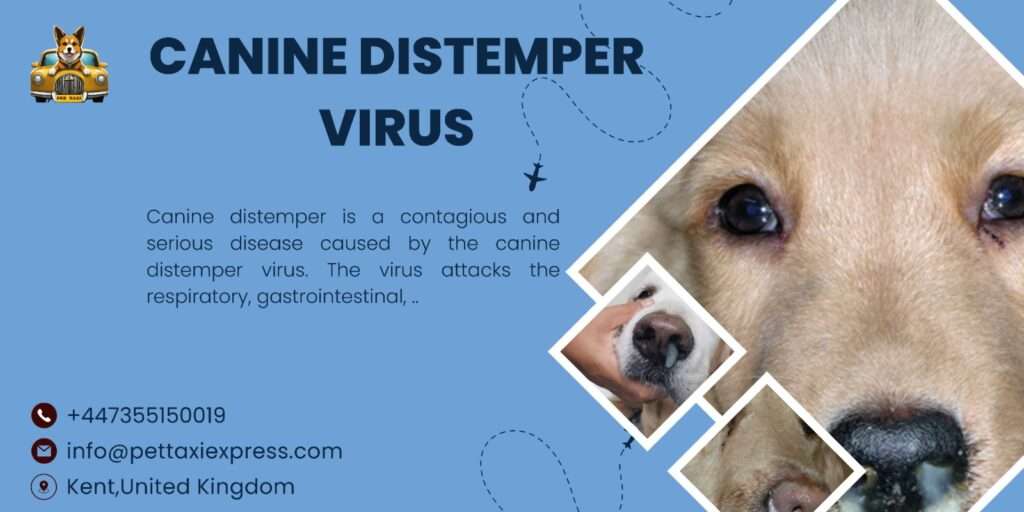
Table of Contents

Canine distemper stands as one of the most feared diseases among dog owners and veterinarians alike. It’s a highly contagious viral illness that affects a wide range of animals, with dogs being the most susceptible. Understanding this disease is crucial for every pet owner, as it not only poses a significant threat to individual dogs but also to the canine population as a whole. In this article, we delve into the intricacies of canine distemper, exploring its causes, symptoms, prevention, and treatment.
The Viral Culprit: Understanding Canine Distemper
Canine distemper, often dubbed as the “viral culprit,” stands as one of the most dreaded diseases among dog owners and veterinarians alike. This highly contagious illness poses a significant threat to the canine population, necessitating a deep understanding of its nature and characteristics. In this article, we delve into the intricacies of canine distemper, exploring its causes, symptoms, prevention, and treatment, shedding light on the viral culprit behind this formidable disease.
Canine distemper virus (CDV) belongs to the Paramyxoviridae family, which also includes viruses causing measles in humans and rinderpest in cattle. It’s a single-stranded RNA virus, making it highly mutable and capable of evolving rapidly. This characteristic contributes to the challenges in developing effective treatments and vaccines against the disease.
Transmission and Susceptibility
The infection basically spreads through airborne openness to respiratory emissions from tainted creatures. However, it can also spread through direct contact with contaminated surfaces, such as food and water bowls, collars, or bedding. Puppies and unvaccinated dogs are at the highest risk of contracting distemper, but dogs of any age can become infected.
Clinical Symptoms
Canine distemper can manifest in various ways, often resembling symptoms of other respiratory illnesses. Initially, infected dogs may exhibit fever, nasal discharge, coughing, and lethargy. As the disease progresses, more severe symptoms can develop, including vomiting, diarrhea, neurological signs like seizures or tremors, and even paralysis. The severity of the symptoms can vary widely depending on the dog’s age, vaccination status, and overall health.
Diagnosis and Treatment
Diagnosing distemper typically involves a combination of clinical signs, laboratory tests, and imaging studies. Unfortunately, there is no specific antiviral treatment for distemper. Management primarily focuses on supportive care to alleviate symptoms and prevent secondary bacterial infections. Intravenous fluids, antibiotics, anti-seizure medications, and nutritional support may be part of the treatment regimen.
Prevention: The Key to Combatting Canine Distemper

Prevention remains the most effective strategy against canine distemper. Vaccination plays a crucial role in protecting dogs from this deadly virus. Puppies should receive a series of vaccinations starting at around 6-8 weeks of age, with booster shots administered periodically throughout their lives. Additionally, practicing good hygiene, such as regularly cleaning and disinfecting common areas, can help reduce the risk of transmission.
The Importance of Herd Immunity
Maintaining high vaccination rates within the dog population is essential for achieving herd immunity against distemper. Group invulnerability happens when a critical piece of the populace becomes insusceptible to a sickness, making it challenging for the infection to spread. By vaccinating as many dogs as possible, we can create a protective barrier that safeguards both individual animals and the community at large.
Conclusion
Canine distemper remains a significant health concern for dogs worldwide, highlighting the importance of understanding its causes, symptoms, and prevention strategies. Through vaccination, responsible pet ownership, and collaboration between veterinarians and pet owners, we can work towards reducing the prevalence of this devastating disease. By arming ourselves with knowledge and taking proactive measures, we can help ensure that our beloved canine companions lead long, healthy lives, free from the threat of distemper.
for more blogs visit our website
